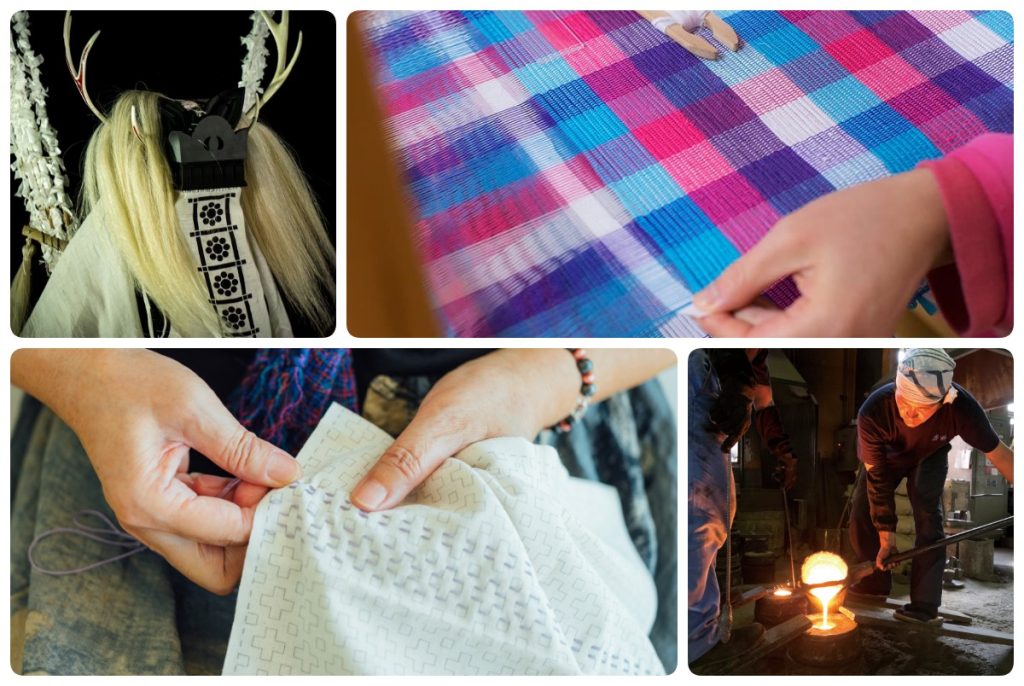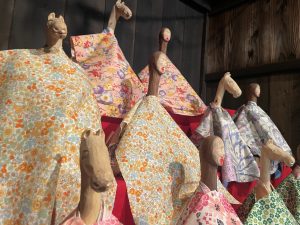実施日 : 2025年09月18日(木) - 19日(金)
Iwate Press Tour
投稿日 : 2025年08月20日
Iwate Press Tour
Tour Dates: Thursday, September 18–Friday, September 19, 2025
Topic : Diverse People Weaving Traditions for the Future—Visiting Where Traditions Are Passed on in Iwate
[Tour Details]
There are a variety of traditional crafts that remain alive in Iwate Prefecture to this day.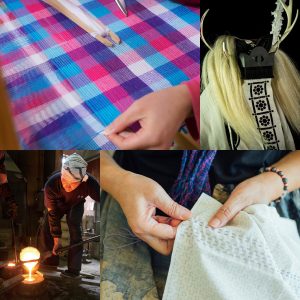
Handiwork involving fabric, such as sakiori, sashiko, and homespun, has a history of being used as a clever way to reuse fabrics for a long time in the cold weather.
Techniques based on this concept of repairing fabric and reusing objects have been gaining attention not only in Japan, but also from overseas based on modern perspectives of sustainability and upcycling.
Nambu ironware, with its long history, is another traditional craft synonymous with Iwate Prefecture. While protecting the ancient techniques which have been passed down, efforts have also been made to fit the modern market by developing products appealing to foreign tastes and expanding sales overseas.
There are also business operators striving to pass on local performing arts by applying technology to traditional crafts.
Traditions in a variety of areas have been evolving like this in their own ways in Iwate Prefecture.
These developments have been supported by people from various walks of life, regardless of age, gender, or the presence of disabilities, applying passion to their own fields: women who responded to the challenge of recovering from the disaster, people with disabilities participating in creating products, and people training the next generation.
◆This press tour will visit places in Iwate Prefecture involved in traditional crafts, and see specific initiatives dealing with passing on culture and the sustainability of local communities. The tour will cover now people interact with tradition and how they strive to pass it on to the future amidst a changing society.
1. Otsuchi Sashiko (Otsuchi)
—The traditional handicraft sashiko becoming a globally recognized local brand after the disaster
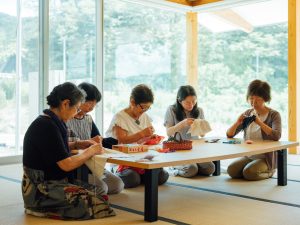
[Photo courtesy of Otsuchi Sashiko]
Otsuchi Sashiko is an organization that was created in Otsuchi, Iwate after it was heavily damaged in the 2011 Great East Japan Earthquake. It started with the Otsuchi Recovery Sashiko Project, which women who had lost many things in the disaster and were facing a sense of loss started with the support of volunteers. The organization is managed by the NPO Terra Renaissance.
Sashiko is a traditional handicraft, using repeated needlework embroidery to reinforce old fabric for continued use. It was passed on as a method to use valuable cotton products for longer in cold areas such as the Tohoku region. Adding and reinforcing fabric is a clear demonstration of the spirit of valuing objects, and matches modern sensibilities regarding sustainability.
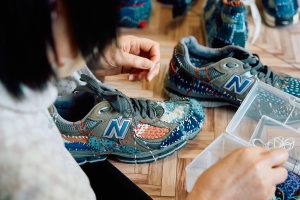
[Photo courtesy of Otsuchi Sashiko]
Currently, women in their 40s to 80s are working as sashiko artisans, with steady progress being made on establishing otsuchi sashiko as a local industry and brand. At first, they began by making dish towels and coasters, but in recent years they have expanded to OEM*, collaborations with companies, and selling their products at department stores.
In 2023, Otsuchi Sashiko collaborated with the clothing manufacturer MOONSHOT Inc. to start the SASHIKO GALS project as its Sashiko artisan division, selling custom sashiko for fashion items such as sneakers. The brand became known for being popular with overseas celebrities, and has been gaining global attention.
◆The tour will hear from Ms. Kanako Sasaki and Ms. Kaori Kurosawa, from the NPO Terra Renaissance which manages Otsuchi Sashiko, about the background of starting the project, the development of sashiko as a local industry, and the response from overseas. The tour will also see sashiko artisan women at work and hear about their thoughts on the project and future plans.
(*OEM=Original Equipment Manufacturing. Making products for other brands under commission.)
2. Saccora Japan (Morioka)
—Sustainable and high-quality traditional crafts produced by a factory supporting welfare programs
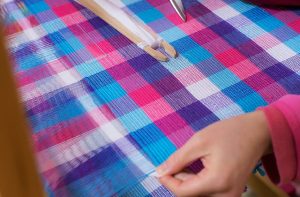
[Photo courtesy of Saccora Japan]
Sakiori is a traditional type of textile created in the Tohoku region during the Edo period. In order to fully use all precious fabric in this cold climate, old fabric was torn into thin strips and woven to make new fabric, making use of a limited resource. In modern times, it has become popular due to its fashionability.
Saccora Japan is carrying out an initiative based around sakiori that combines traditional crafts and welfare programs. After watching a sakiori class at a special support school for children with disabilities, Saccora Japan’s representative, Ms. Etsu Ishigashira, founded the company with the goal of creating a workplace where anyone could feel their work was rewarding.
The company is operated as a Type B Continuous Support for Employment Center*, with 15 users with disabilities training as artisans to acquire sakiori skills, working together with people without disabilities.
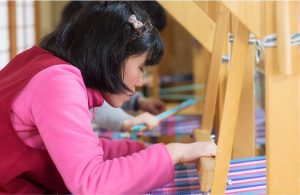
[Photo courtesy of Saccora Japan]
In the workshop, users with disabilities act as artisans and fulfill roles based on their individual circumstances, such as weaving, with work being carried out by dividing the labor. By gaining experience while attempting work they are less skilled at, employees can increase their skills and gain confidence, in a system through which is also reflected in their wages.
Saccora Japan’s sakiori has been praised for its high quality, and many famous fashion brands and artists have made orders with them, along with an increasing number of orders from overseas. This initiative has been drawing attention as a new type of local manufacturing going beyond the framework of welfare.
◆The tour will hear from Ms. Etsu Ishigashira, president of Saccora Japan, about the background behind founding the company, the fusion of traditional crafts and welfare, and implementing employment support, as well as being guided around the workshop by Mr. Ryota Murayama, director of the employment center and sakiori business, to see sakiori being made. There will also be an opportunity to speak with the users about what it is like working there.
(*Type B Continuous Support for Employment Center: A work-style welfare service based on the Act on Providing Comprehensive Support for the Daily Life and Life in Society of Persons with Disabilities, providing employment opportunities and a place for productive activities to people with disabilities or diseases that would have difficulty working in other companies, as well as providing training and support for acquiring the knowledge and skills necessary to work.)
3. Michinoku Akane-kai (Morioka)
—Passing on subtle colors and warmth to the next generation
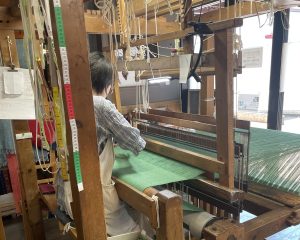
The predecessor to Michinoku Akane-kai is the Morioka Women’s Cooperative Workshop, which was founded in 1958 in Morioka to support economic independence for women who had lost their husbands in the war. Michinoku Akane-kai was founded in 1962 to sell the homespun products made by those women.
Homespun fabric is a simple hand-woven fabric made by dyeing wool, originally made by farmers in Scotland and Ireland and reaching Iwate Prefecture around 1881, where it became a source of income for farmers in the winter. With increased demand for homespun for uses such as army uniforms, the industry was promoted by the national government and became firmly established in Iwate.
Michinoku Akane-kai carries out the entire process, from dyeing the wool to spinning and weaving. They make products such as scarves and blankets, and their products are known for being very lightweight and good at retaining heat, with a soft texture from the wool handspun by artisans and the delicate colors created by combining various shades of wool.
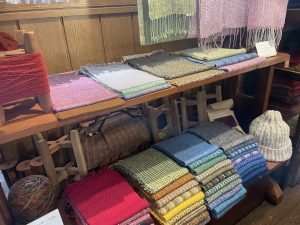
As it was at the time of its founding, the company is run by women, with a variety of flexible employment styles available including full time, part time, or piecework, enabling a stable working environment while considering different household situations and stamina.
In 2022, 60 years after its founding, Michinoku Akane-kai moved from its aging workshop to its current workshop. With a majority of the employees being in their 50s, the company took this opportunity to hire younger employees in their 20s with a view to keeping the business alive for the next generation, maintaining their skills and the organization.
◆The tour will hear from Ms. Ayaka Suwa, a younger employee at the company, about the origin of Michinoku Akane-kai, the current operating structure, and initiatives to pass on the legacy of homespun which has become a traditional industry in Iwate, as well as seeing how homespun is made.
4. Iwachu Co., Ltd. (Morioka)
—Iwachu’s craftsmanship where tradition and innovation coexist, spreading to the world
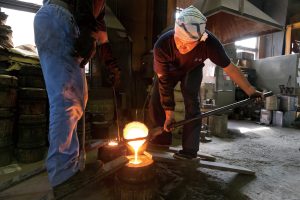
[Photo courtesy of Iwachu]
Morioka, Iwate has long been known for producing large amounts of raw materials such as quality iron and river sand, and in the 17th century the local ruler of the Nambu domain part of current-day Iwate invited cast iron artisans from Kyoto to Morioka to have them make iron teapots to preserve and nurture their techniques. Now, ironware made in the area is known as “Nambu ironware” throughout Japan.
Iwachu, which was founded in 1902, is a Nambu ironware manufacturer with its head office in Morioka. From design to mold-making, casting, finishing, and sales, the company performs everything in house.
Iwachu currently has two workshops, one where Nambu ironware is made using the traditional techniques of artisans, and one that incorporates machine production to make modern kitchenware and colorful teapots. The company is known for being the first in the Nambu ironware industry to incorporate mass production and automation.
At the Minamisenboku workshop which manufactures traditional Nambu ironware, currently-employs six artisans ranging from in their 20s to 50s. One of its strengths is that due to the established training system, new artisans can acquire all the necessary skills within three years.
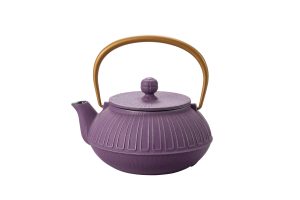
[Photo courtesy of Iwachu]
Iwachu began expanding overseas by exhibiting at trade fairs. Starting with an order from a French tea shop, they developed a technique for adding color to Nambu ironware, and their colorful teapots became well regarded first in Europe, then later in the North American market. Iwachu started exporting them in earnest starting in the 1990s. Currently, they have distributors in around 30 countries including France, with mainly their teapots being popular in Europe and the Americas and kitchenware such as pots being popular in Asia.
◆This tour will visit Iwachu’s Minamisenboku workshop which manufactures traditional Nambu ironware, and after being briefed about the company by Mr. Kiyomitsu Takahashi, head of the sales department, will learn about and see the process of making Nambu ironware from Mr. Akira Yaegashi, a traditional craftsman who is the third generation to inherit the gago* Kiyoshige, as well as hearing from younger artisans.
(*Gago: A pseudonym used by artisans, passed down through the generations at each workshop, which is engraved in each piece produced to prove the tradition, technique, and trustworthiness of the artisan and workshop.)
5. Koyata Co., Ltd. (Hanamaki)
—Using 3D printer technology to make costumes as artisans age : Supporting the continuation of traditional performing arts
Koyata is a dyed goods company in Hanamaki, Iwate founded in 1781. In response to the issue of the decrease in the
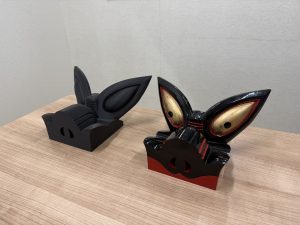
A 3D-printed shishi-gashira (left), and one after color has been applied (right)
[Photo courtesy of Koyata]
number of performers and artisans for local performing arts in recent years, in 2024 they established the local performing arts project Raita.
The local performing art shishi-odori (deer dance) passed down mainly in Iwate and Miyagi is a dance performed while beating drums to pray for peace and banish evil spirits, and is recognized as an intangible folk cultural property by Iwate Prefecture. The shishi-gashira (deer head) made using long, black horsehair and deer horns is a unique part of the costume used. In the past, artisans made the costume by hand, but with artisans retiring due to old age it had become difficult to acquire the costume.
In response, local performing arts company Raita used government subsidies to contribute to passing on local culture in a new way by making shishi-gashira using 3D printer technology. They presented a solution to a problem local performing groups faced, a lack of artisans to make costumes and accessories.

Rubber waraji sandals made by Koyata [Photo courtesy of Koyata]
The company also began manufacturing rubber waraji sandals, another item critical as footwear for traditional performing arts. Developed together with local traditional performing arts groups, the product has been well received and plans are to increase the scale of production. Inquiries from overseas have also been gradually increasing in number.
Currently, they are also going forward with efforts to support traditional performing arts other than shishi-odori, with the goal of becoming a general manufacturer for local performing arts.
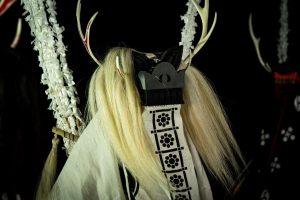
A dancer wearing the 3D-printed shishi-gashira
[Photo courtesy of Koyata]
◆The tour will hear from Mr. Yuta Kosegawa, the 10th-generation head of Koyata, about making shishi-gashira using 3D printing technology, and see rubber waraji sandals being made, while also hearing about their development, efforts made, and future plans. There will also be a shishi-odori performance, and the opportunity to ask the performers about what using the shishi-gashira and rubber waraji sandals is like.
6. Tono Denshoen Oshirado Hall (Tono)
—A local folk belief that has been maintained to this day
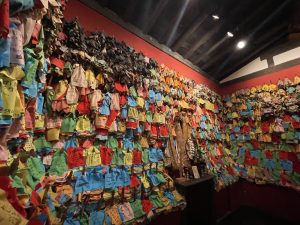
Oshira-sama is known in northern Tohoku as a guardian god of the home. There are many stories, but she is known as the god of silkworms, horses, or eyes. In many cases, an idol carved out of wood is clothed with many layers of colorful fabric. According to a study by the Iwate Prefectural Museum, the oldest Oshira-sama in the prefecture was from 1525, and as of 2007, there were Oshira-sama in over 1,200 homes in Iwate Prefecture.
At the Oshirado Hall in Tono Denshoen in Tono, Iwate, there are over 1,000 Oshira-sama dolls. In Tono, the origin of Oshira-sama is said to be a love story between a girl and a horse. The many dolls wrapped in fabric, which were the object of prayer from different households, help pass on the local history and spiritual culture to the modern day.
◆The tour will hear from Mr. Kazuya Saito, director of operations of Denshoen, as well as a local storyteller, about the local belief in Oshira-sama and the history of Oshirado Hall, and also see inside the hall.
[Tour Itinerary]
- 1. Dates:
Thursday, September 18–Friday, September 19, 2025
- 2. Schedule:
*The schedule may change without notice.
[Day 1: Thursday, September 18]
|
07:16-09:43 |
Tokyo Station→Kitakami Station (Hayabusa 101) |
|
11:10-12:30 |
Otsuchi Sashiko |
|
12:50-13:40 |
Lunch |
|
14:30-15:15 |
Tono Denshoen Oshirado Hall |
|
16:40-18:00 |
Iwachu Co., Ltd. |
|
15:45-17:45 |
Arrive at hotel (in Morioka) |
[Day 2: Friday, September 19]
|
08:45 |
Leave hotel |
|
09:00-10:30 |
Michinoku Akane-kai |
|
11:00-12:30 |
Saccora Japan |
|
12:40-13:40 |
Lunch |
|
14:30-16:25 |
Koyata Co., Ltd. (including watching shishi-odori) |
|
17:18-19:56 |
Shin-Hanamaki Station→Tokyo Station (Hayabusa 112) |
- 3. Qualification: Bearer of the Ministry of Foreign Affairs of Japan Press Registration Card (in principle)
- 4. Cost: 13,000 yen per person, including transportation, accommodation (breakfast included)
*Information on payment and cancellation fee will be provided to participants.
*Participants will be required to pay their own transportation costs to the meeting place before the tour, and after the tour ends
- 5. Participants: Limited to 6 participants.
(Only one reporter or one photographer from each company, but two participants from each TV team will be acceptable.)
*Participants will be determined by the tour organizer.
6.Please be sure to confirm and agree to the following before applying
6-1. Basic Information
(1) This tour is organized by Iwate Prefecture and run by the FPCJ.
(2) The schedule is subject to change without notice.
(3) This tour will require participants to bear a part of the cost but is not a profit-making venture.
(4) Iwate Prefecture and the FPCJ take no responsibility for any accidents, injuries, illness, or other problems which occur during the tour.
(5) There may be some restrictions on photographing and filming at the tour sites. Please follow the instructions of the staff in charge.
(6) This press tour is intended to provide opportunities for news coverage. We request that all participants send a copy of the content of their coverage (article, video, or audio in the case of radio) to Iwate Prefecture through the FPCJ after their reports are published or aired. When your report is in a language other than English or Japanese, we also ask you to provide a summary in English or Japanese. By submitting your application, we assume that you have agreed to these conditions.
6-2.Handling of Personal Information
When applying for the tour, you agree to the below:
*Regarding the handling of personal information, the press tour organizers and operators will respect Japan’s Act on the Protection of Personal Information and all other laws and guidelines on the protection of personal information and handle personal information appropriately.
(1) The tour operators will, when there is a need to do so for the press tour, provide the personal information provided when applying (organization name, personal name, etc.) to other parties in the following cases:
-To arrange travel or insurance through travel agencies (Information provided to: Travel agencies, accommodation operators, transportation operators, insurance companies)
-To ensure smooth operations during the tour (Information provided to: Interpreters, stops on the tour, interviewees)
(2) The tour operators, to ensure smooth operation of the tour, will share the personal names and organization names of applicants with the tour organizers.
6-3.Recordings by Press Tour Organizers or Operators During the Tour
When applying for the tour, you agree to the below:
(1) For the record-keeping purposes, the tour operators may film or photograph the tour while it is happening. The copyright holders for these photos or videos will be the tour organizers.
(2) Photos, videos, or articles of the press tour may be uploaded to websites or social media accounts operated by the organizers or operators.
(3) The likeness or voice of participants may appear in the abovementioned photos or videos, but you agree to their use by the organizers or operators.
7. FPCJ Contacts:
Watanabe (Ms.), Yoshida (Ms.)
Media Relations Division
(Tel: 03-3501-3405, E-mail: ma@fpcjpn.or.jp)
◆ When applying for the tour, you agree to the following conditions ◆
- Press tours have participants from multiple media organizations, and interviews, filming, and photographing are generally carried out jointly. There is no guarantee that you will be able to perform individual interviews or take individual videos at any of the stops on the tour.
- You must follow the instructions of the tour organizers and operators regarding the tour schedule, timing, and restrictions on taking videos or photos. If you refuse to follow instructions, you will no longer be allowed to participate in the press tour from that point on.
- Please ensure you do not include any information (including images, video, and audio) in your reporting that could make it possible to identify the other journalists participating in the press tour or the organizations they work for. If you would like to use such information in your reporting, confirm directly with the other journalist in advance and receive their permission. Please provide the same courtesy to staff accompanying the press tour as well.

